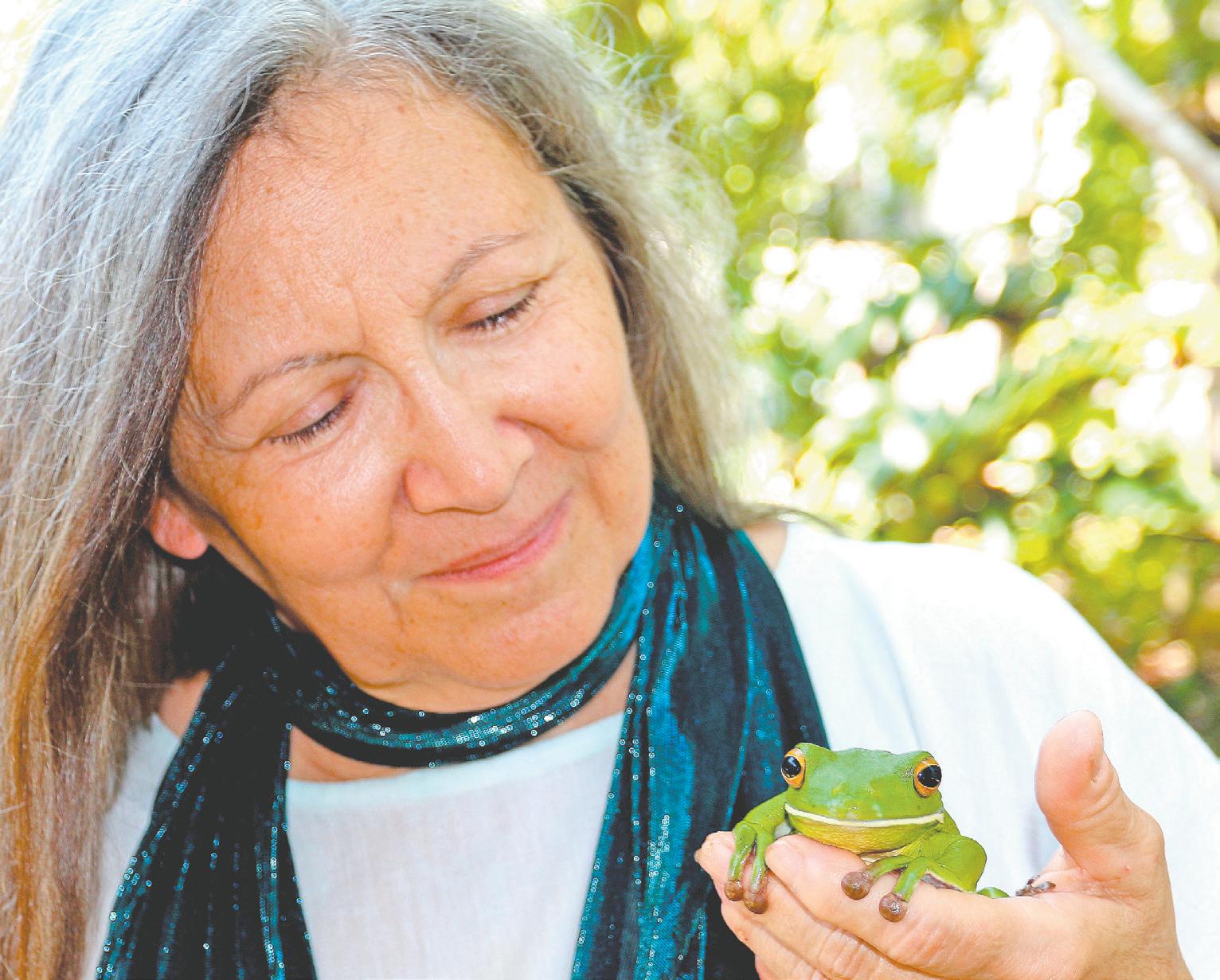
2 minute read
It’s not easy being green
TANYA MURPHY
When it comes to caring for cute and cuddly endangered animals, slimy amphibians are not high on many peoples’ priority list.
But frogs, some of our rainforest’s most beautiful and fascinating denizens, are being wiped out at an ever-growing rate, according to Queensland’s leading frog rescue facility FrogSafe.
FrogSafe Founding President Deborah Tergolotti said that she started the frog hospital in 1998 after seeing the damage a new pathogen could do to frog populations.
She said she believed the increasing rates of frog illness were due to impacts on frogs’ immune systems from agricultural chemicals which entered the market during the 1990s.
“Frogs should normally be able to heal a wound on their own, but now they quickly progress to infections and septicemia from the tiniest scratch, and this is definitely not normal,” she said.
“Chemicals have been used in Australia for many decades but it wasn’t until the newer additions in the mid 1990s - including some which have already been banned in Europe due to their impact on critical pollinators like bees - that many new wildlife disease issues sprung up simultaneously.
“Having these chemicals in our soil and waterways can have an impact across the board from World-Heritage listed rainforest to the Barrier Reef.
“Water-based animals like frogs, larval insects, prawns and even corals can be affected so they act as ‘canaries in the coalmine.’
“Frogs don’t attract as much funding or interest as other cute cuddly animals, but it’s important that we document and research the unprecedented plethora of diseases, cancers and malformations they are now developing.
“These changes tell us that something is going wrong in the environment and that environment supports everything we do from tourism to food production and everything in between.
“At FrogSafe, we are just volunteers but I believe our observations should be receiving more attention from scientists, and helping to inform policy on the chemicals allowed in Australia, because the system at present is not doing sufficient due diligence before they are approved.”
Other than disease, Ms Tergolotti said other threats to frogs included cat and dog attacks, car impacts, parasites spread by cats, chemiFrogSafe founder Deborah Tergolotti is one of the world’s leading experts in frog rescue and rehabilitation.
cal burns, and crushing injuries when people close doors and windows without checking for frogs first.
Ms Tergolotti said caring for sick frogs was complicated and training was definitely required to bring carers up to speed with clinical diagnosis and treatments.
“I have developed a comprehensive course, but attendees need to be able to travel to Mission beach over a period of time,” she said.
The frog hospital operated in Cairns for 19 years but moved to Mission Beach three years ago. Volunteers are always needed and no knowledge of frogs is required.
Most of the jobs are outside the frog room and range from simple manual tasks right through to technical skills.
FrogSafe receives cases from Mackay to Cooktown and does long distance diagnosis for the rest of the country.
The rule of thumb for sick frogs is that if you see a frog out in the open during the day, there is something wrong with it. If you see one, call FrogSafe on (07) 4068 9402 or send an email to admin@frogsafe.org.au.
To donate or for more information visit www.frogsafe. org.au.










